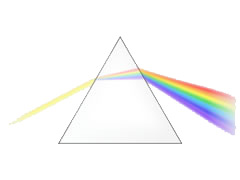Making Music with Water :
Have you ever tried making music with glasses or bottles filled with water? I bet you favourite band hasn't. Experiment with your own special sounds by turning glasses of water into instruments, make some cool music and find out how it works.
What you'll need:
- 5 or more drinking glasses or glass bottles
- Water
- Wooden stick such as a pencil
Instructions:
- Line the glasses up next to each other and fill them with different amounts of water. The first should have just a little water while the last should almost full, the ones in between should have slightly more than the last.
- Hit the glass with the least amount of water and observe the sound, then hit the glass with the most water, which makes the higher sound?
- Hit the other glasses and see what noise they make, see if you can get a tune going by hitting the glasses in a certain order.
What's happening?
Each of the glasses will have a different tone when hit with the pencil, the glass with the most water will have the lowest tone while the glass with the least water will have the highest. Small vibrations are made when you hit the glass, this creates sound waves which travel through the water. More water means slower vibrations and a deeper tone.
Make Your Own Rainbow:
Make Your Own Rainbow:
Learn how to make a
rainbow with this fun science experiment for kids. Using just a few
simple everyday items you can find out how rainbows work while enjoying
an interactive, hands on activity that’s perfect for kids.
What you'll need:
- A glass of water (about three quarters full)
- White paper
- A sunny day
Instructions:
- Take the glass of water and paper to a part of the room with sunlight (near a window is good).
- Hold the glass of water (being careful not to spill it) above the paper and watch as sunlight passes through the glass of water, refracts (bends) and forms a rainbow of colors on your sheet of paper.
- Try holding the glass of water at different heights and angles to see if it has a different effect.
What's happening?
While you normally
see a rainbow as an arc of color in the sky, they can also form in
other situations. You may have seen a rainbow in a water fountain or in
the mist of a waterfall and you can even make your own such as you did
in this experiment.
Rainbows form in the
sky when sunlight refracts (bends) as it passes through raindrops, it
acts in the same way when it passes through your glass of water. The
sunlight refracts, separating it into the colors red, orange, yellow,
green, blue, indigo and violet.
